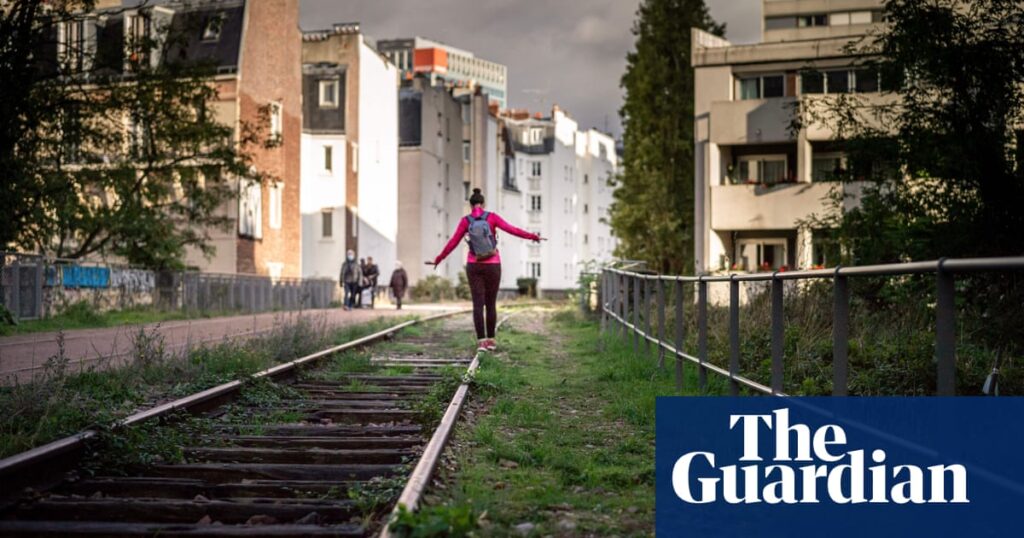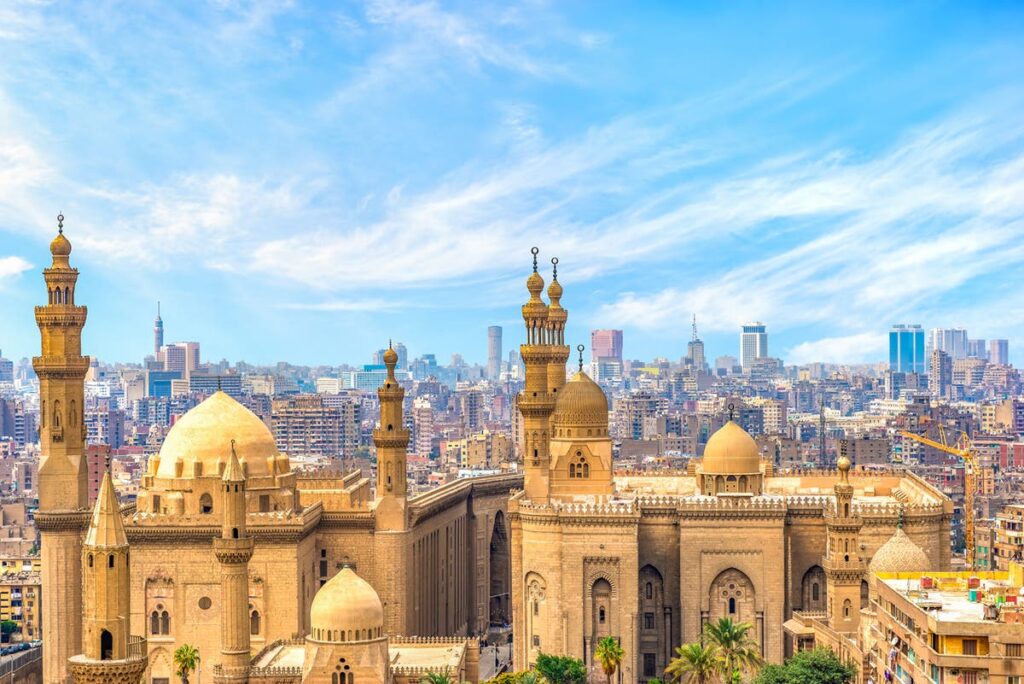A rustle in the undergrowth sends birds wheeling above the trees and into the sky. I’m left alone and in near total silence as I look along the train tracks that disappear in either direction. It feels as if I’m in the heart of the countryside, but actually, the Boulevard Périphérique, the traffic-choked ring road that encircles Paris, is just a stone’s throw away. This disused rail route, the Petite Ceinture, offers wildlife and quiet solitude just moments from the roaring motorway, thanks to a plan that is turning parts of the line into walkable green spaces – the French capital’s less manicured (and less central) alternative to Manhattan’s High Line or north London’s Parkland Walk, a rewilded railway line that’s part of the Capital Ring walk.
Built on the site of the Thiers wall, the last defensive wall of Paris, and its surrounding shantytown, the eight-lane Boulevard Périphérique (known as the Périph) is used by more than a million cars a day. The 20-mile (32km) railway line just inside the ring road was created to supply the Thiers wall, carrying goods and then passengers as the city’s first metropolitan railway service.
But, as the Métro we know today developed, la Petite Ceinture’s popularity declined, with much of it becoming derelict. Together with the city of Paris, the line’s owner, SNCF Réseau (part of the state-owned railway company), have worked to regreen 4.5 miles of the track in small sections around the city since 2006 – and by 2026 a further 2.5 miles will be opened (the rest is inaccessible to the public).
Like the city’s different arrondissements, each section of walkable track has its own personality and has been approached differently. In some places, paths, nature trails and shared gardens have been created, while others have been left to rewild. In residential Bel-Air in the 12th, the Ceinture is calm and well maintained, with trees and greenery on either side. I walk along the railway tracks behind an elderly couple strolling arm in arm, while a man rakes the soil in an allotment at the edge of the line. Mid-morning in the northern reaches of the 19th, I pass a man sweeping glass from around the entrance of La Gare-Le Gore, a club in an old Ceinture station that hosts experimental jazz until midnight and techno until 6am.
The Ceinture is generally far less polished than New York’s High Line, but the most similar section – and the busiest and neatest – is in the 15th arrondissement, between the Pont du Garigliano and Parc Georges Brassens. Here, I take a lift down to the line from street level and walk past elaborate graffiti next to the fenced-off tunnel, and alongside the courts and clubhouses of the Vaugirard Tennis Club. I stop at Voie 15, a trendy restaurant, coffee shop and coworking space in a converted station building, full of young professionals on their laptops, while joggers run past along the tracks. Further on, I even snatch a view of the (top of the) Eiffel Tower framed by apartment buildings. One of the main aims of the repurposed Ceinture is to encourage wildlife to the city, with different areas feeling more or less “wild”. The sunken section between Avenue du Général Leclerc and Rue Didot in the 14th arrondissement, with its high, tree-studded banks, supports almost 250 different species of plants and animals. In winter, a colony of pipistrelle bats hibernate inside the tunnel at the western end, and along with the rest of the Ceinture, it’s an important habitat for hedgehogs and foxes. In spring and summer, vegetation crowds the tracks and tree canopies obscure the peripheries here to give the impression that you’re enveloped in nature. In the well-heeled 16th, the line has been taken over by a strip of woodland and 200 plant species have been recorded here, including hazel and blackthorn, gooseberries, viburnum and buddleia. Amid Paris’s neatly manicured parkland, it’s a rare opportunity to get my boots caked in mud.
Several grassroots, community-focused projects and venues thrive on the Ceinture’s undeveloped land and abandoned infrastructure. I head to La REcyclerie, an urban farm and eco-centre focusing on repairs and recycling, which crams a lot into its stretch by the Porte de Clignancourt. The canteen in the old station building is buzzing with people finishing a late lunch or enjoying an early aperitif. A pop-up market focuses on vintage clothes, and on the 1,000sq-metre (10,700sq ft) urban farm, volunteers tend to the chickens. The events programme features everything from French language sessions for refugees to DIY courses. “In a very dense neighbourhood with few green spaces, it seems important to let nature reclaim its rights and help agriculture in the city,” says Marie-Eugénie Chanvillard, La REcyclerie’s eco-cultural project manager.
La Ferme du Rail, by the trendy Canal de l’Ourcq, is another urban farm that provides accommodation for students and disadvantaged people who are re-entering the workforce. Raised beds line the tracks, and residents work on the neat terraces of vegetables and plants. When produce is harvested, it travels just metres to the farm’s restaurant, Le Passage à Niveau.
after newsletter promotion
As I navigate the last section in my circuit in vibrant Ménilmontant, I reflect on la Petite Ceinture. In each area, it has taken on a role – a place for people, a place for nature, a place for community. Some parts I’ll return to, others I won’t, but it represents a wilder side of Paris, a world away from the nearby chaos of the capital.
For more information visit L’Association pour la Sauvegarde de la Petite Ceinture de Paris
.
Premium IPTV Experience with line4k
Experience the ultimate entertainment with our premium IPTV service. Watch your favorite channels, movies, and sports events in stunning 4K quality. Enjoy seamless streaming with zero buffering and access to over 10,000+ channels worldwide.

















